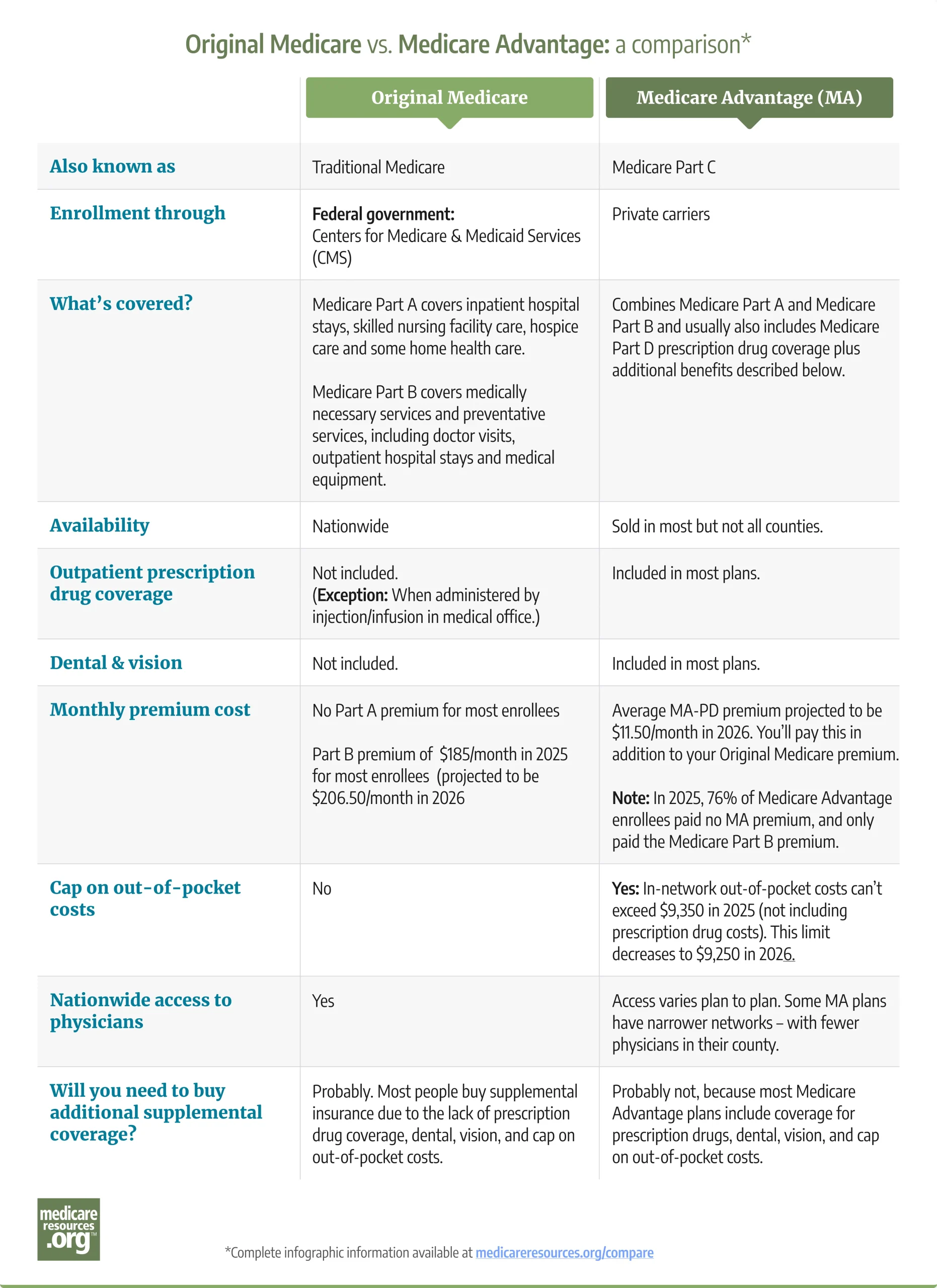If you already have Medicare Part A and Medicare Part B (or are eligible to enroll in them), you can choose to enroll in any Medicare Advantage plan available in your area, instead of Original Medicare. You can do this when you’re first eligible for Medicare, or during Medicare Open Enrollment (the Annual Election Period).
But there are some rural areas of the country where no Medicare Advantage plans are available for purchase. If you’re in one of those areas, Original Medicare is your only Medicare coverage option.
An increasing number of employers are using Medicare Advantage plans to provide health coverage to their retirees: About 17% of Medicare Advantage enrollees are enrolled in employer-sponsored Medicare Advantage plans.
If you have employer-sponsored or union-sponsored health benefits, you may be able to add a Medicare Advantage plan, but you’ll want to discuss this with your benefits administrator first, to ensure that you won’t lose your existing health benefits if you enroll in a Medicare Advantage plan.
Special Needs Plans (SNPs) are Medicare Advantage plans that are specifically designed to cater to the needs of certain populations, such as individuals with certain chronic medical conditions. Institutional Special Needs Plans (I-SNPs) are for, among other things, people who live in long-term care skilled nursing facilities. In order to join any SNP, you would have to meet the specific eligibility requirements of the plan.






